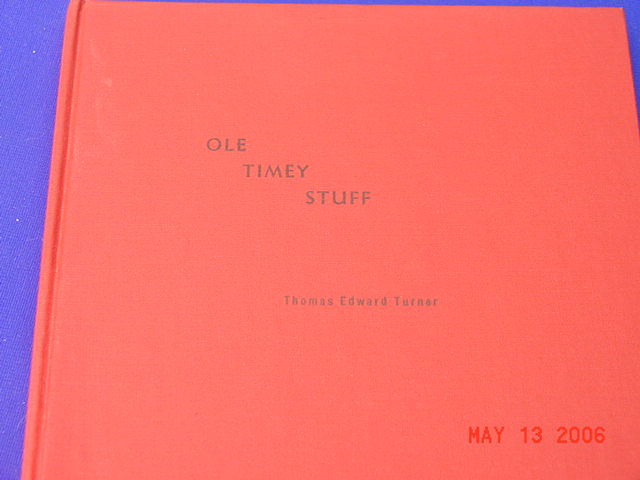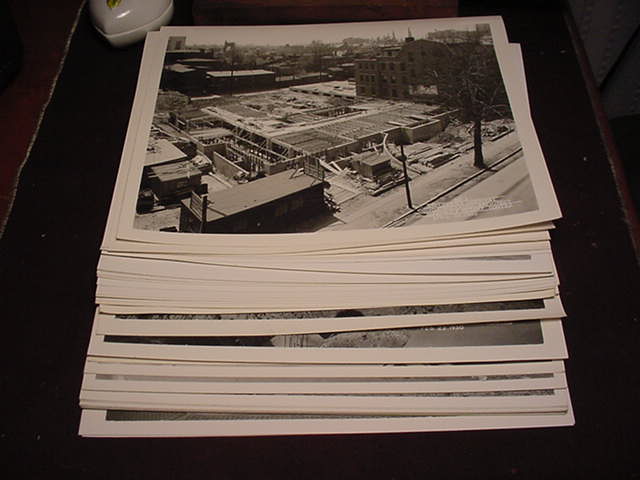Schwarz
View current page
...more recent posts
Marcel Duchamp saw in 1912 a mélange of egos, money, careers, and overblown or makeshift theories. "Like a basket of crabs," was how he described the scene.
Duchamp consciously chose to step outside of it all and to go his own way. LIke the famous Fountain --which was never displayed at that exhibition-- he absented himself from the sold-out ones before they even knew it, and created a vortex in the wake of his (invisible) departure. He became not only better than an artist, his agile independence guided him around all of society's traps, and he honored his calling and mastered his life. In the meantime, without any conscious intention at all, just by example, he was the eccentric who established a new center in art.
nyc in 2016
schwarz art bio
fake gay wrestling hall of fame
"It's about 40 minutes long--its about "If I Could Only Fly"--its about finding a place to sleep at night--a comment about the human condition--they are all songs that I've encountered that I think people have missed" - Jim Dickinson on Free Beer Tomorrow
Free Beer Tomorrow is the first solo release in 30 years from legendary producer and musician, Jim Dickinson. Since his 1972 debut, Dixie Fried, Jim has worked with everyone from Aretha Franklin to Big Star. Some of his projects include playing piano on the Rolling Stones' "Wild Horses," performing on Bob Dylan's 1998 Grammy winning Time Out of Mind, and producing The Replacements Pleased To Meet Me (1987). More recently, Dickinson has also worked with the North Mississippi Allstars, which are led by his sons, Luther and Cody. His boys are among the instrumentalists who appear on his new CD.
Dee Snider, Fred Durst, and Brian Turner
lets go to the video tape
WWE(R) Launches ECW(R) As Third Brand
¶ STAMFORD, Conn., May 25, 2006 - World Wrestling Entertainment,
Inc., today announced the official launch of ECW (Extreme Championship
Wrestling(R)) as a brand extension to its RAW(R)and
SmackDown(R)franchises.
¶ After acquiring the ECW assets in 2003, WWE spent the past few
years re-introducing ECW to the global WWE audience and increasing the
interest in its unique brand of sports entertainment. To date, WWE has
successfully released three ECW DVD's, all of which have become best
sellers, and produced a very profitable ECW pay-per-view event in June
2005, with another ECW pay-per-view scheduled for this June 11, 2006.
With consumer interest at an all-time high, WWE is introducing ECW as
a complementary brand to RAW and SmackDown.
¶ "After keeping the ECW concept alive and creating an enormous
cult-like following for all things ECW from DVD's to PPV's to books,
we feel that now the time is right to officially launch ECW as its own
stand-alone franchise," said Vince McMahon, WWE Chairman. "RAW,
SmackDown and ECW now represent a portfolio of WWE brands for fans of
all ages and interests to enjoy."
¶ Similar to WWE's RAW and SmackDown brands, WWE will produce,
market and promote a full line of ECW products from television
programs to pay-per-views to live events to licensed consumer goods.
¶ In a related announcement, The SCI FI Channel today announced it
would start airing one-hour episodes of a new ECW live television
program, debuting June 13 at 10 p.m. ET.
smelliest block on les
b0b dyl4n on x^^
if your thinking of moving to: laurel canyon
Jenny Holzer's latest show, a survey of sensitive US government documents silk-screened onto linen canvases, offers a wrenching snapshot of the discursive girders and casualties (both textual and corporeal) of state violence. With rare exception, these texts have been rendered anonymous through bureaucratic redactions: An entire 1990 "Memo for the Secretary of Defense" by Colin Powell has been scribbled out, save the signature, while a series of fingerprints have been blotted into a sort of abstract graffiti art. The show tends to circumvent cynicism even as it sanctions an ironic position—perhaps an effect of the frequently shocking content. "I personally have killed a child," reads a line in the middle of a 2004 statement from a US soldier in Iraq. Contrasted with the rhetorical labyrinths assembled by administrators in other pieces, the blunt simplicity of this declaration heightens its dramatic effect, offering an illustration of Holzer's curatorial talent. However necessary, the field of citation is dangerous political ground, and despite Robert Storr's intelligent attempts to obviate criticism in an accompanying essay, it's worth examining the ethics of turning declassified public documents into unique aesthetic objects. One might question the value, or at least the efficacy, of "political art" once it's been funneled away into private collections.
pictures
In the late '30s, Malaparte acquired property on Capri, intending to build a house. The writer redesigned every detail of his planned villa after disputes with the architect, Adalberto Libera, ended in an impasse. With the contractor Adolfo Amitrano and Amitrano's two sons, Malaparte built the place himself.
In The Skin, Malaparte relates that when German Field Marshal Erwin Rommel visited him on Capri, the Desert Fox asked if the writer had designed the house. "No," Malaparte replied. "I created the scenery." Malaparte had likely rehearsed this response to a yearned-for query for years in his bathroom mirror; it was too good a line to throw away, so he simply invented a visit from Rommel that never occurred.
Casa Malaparte bears a glancing resemblance to certain naval vessels used in the American Civil War: a long, slightly out-sloping rectangle, slanted on the landward end, where a trapezoidal stairway widens as it rises from the ground, ending level with a flat roof, where a C-shaped brise-soleil is the only interruption of the sea view.
The building sits on a plateau, flanked by wind-rustled boas of pine boughs and branches of holm oak overhanging the cliffsides of Capo Massullo. The site is the least hospitable outcrop of tufa on Capri, in spitting distance of Tiberius's grotto where, centuries ago, prepubescent "little fishes" nibbled at the emperor's genitals.
Malaparte referred to this domicile as casa come me, "come me" being a favored appellation for things he greatly liked. Another example doubles as a caution against unskeptical readings of Malaparte's fiction: Febo, a dog he rescued on Lipari, inspired a tender prose poem, "cane come me." In The Skin, Malaparte tells how, after years of tender devotion, Febo disappeared. The writer, frantic, searched everywhere on the island for the dog. He finally learned that Febo had been snatched by thieves who sold animals to a local vivisectionist. Malaparte raced to the laboratory, only to find his half-eviscerated pet in the wrenching throes of its last minutes.
The scene breaks any reader's heart. It broke mine, until I chanced upon a letter Malaparte's brother wrote, noting Febo's old age.
* * *
You know the house, from Godard's adaptation of Moravia's novel Contempt. In the film, its owner is the producer Jeremy Prokosch, played to Visigoth perfection by Jack Palance, who tyrannizes director Fritz Lang (playing himself) and cuckolds screenwriter Paul (Michel Piccoli) by seducing Camille (Brigitte Bardot) with Paul's spineless acquiescence. They've come to Capri to finish Lang's version of the Odyssey.
Godard implied no parallels between Malaparte and Prokosch. Prokosch is, as Malaparte wasn't, a dictator in his island hideaway, a barbarian who echoes Goebbels with a contemporary twist: "When I hear the word culture, I take out my checkbook."
Malaparte's casa come me owes nothing to Fascist monumentalism and little to architectural modernism. It is, like the Viennese house Wittgenstein built for his sister, a unique, incomparable architectural anomaly. It was far from perfectly engineered, however. The drainage system wasn't adequate to leach the Mediterranean salinity out of the roof and stucco walls, which were drenched constantly by the Caprian rainfall and occasionally by massive waves. Before its restoration, Casa Malaparte's walls had a consistency of 42 percent corrosive salt.
bronze wire screen door mesh wdi 0.011 18x14 30"w 100' roll $275.00

lost delta found

slade slade
two stories. one cant get a trailer from fema and one cant return a trailer to fema
D'IBERVILLE, Miss. — The mail carrier brought the registered letter to Jessica Lessard's tiny trailer, along with a sour and foreboding comment:
"I hope you got better news than I got," she said.
Lessard, 24, tore open the envelope and felt like crying. The letter was from the Federal Emergency Management Agency. It said she and her family had 30 days to leave the flimsy, government-issued box that has been their home since Hurricane Katrina.
[....]
An empty FEMA trailer has been darkening Kathy Berggren's side lawn in Harahan since January. That's when her father, brother and sister-in-law vacated the temporary shelter and moved back into their Kenner home, which they renovated after Hurricane Katrina flooded it.
Despite four months of pleading, however, Berggren can't get the trailer removed.
"We've been calling every day," she said. "I even asked them if another family could come and stay in the trailer."
The Federal Emergency Management Agency denied the request.

It's...
Nagin, a former cable television executive who ran as a political outsider four years ago, overcame withering criticism of his performance in the months since the Aug. 29 storm. Acknowledging that the effort to restore basic municipal services has been painfully slow, Nagin blamed the lack of progress on a failure of state and federal government to come to the aid of a city reeling from the worst urban natural disaster in American history.
Holl: "You come up this road, the drive turns, you can barely see on the left these brown vernacular adobe buildings, which are the main house and Mei-mei's and Richard's studios, and there's this weird metal thing straight ahead that doesn't look like a house and that you see right through, like it's a gate, or some inhabited piece of sculpture." Holl likes Kiki Smith's remark that it's "a brooch pinned to the mesa." He describes being the first one to sleep in it, a year ago: "The sun rises on the mesa from underneath you and the place glows with a gentle orange light that softly wakes you up."
Tuttle: "The place is uninhabitable half the time. It's too hot in the summer, too cold in the winter. With lasers, they devised a footprint, a slab, on site, then when the panels arrived they didn't fit — they had to pull them together with straps, like a corset. Not very bright. Any damn fool knows you don't do these two things separately. I respect Steven. He's an artist. It's not his fault if the whole architecture profession is ego gone wild." He adds: "It turns out that the greatest invention, the one that made civilization possible, is caulking."
Berssenbrugge: "We wanted prefab, and instead we got a creative architect's iteration of prefab. It's not Green. It's not solar. It was twice over budget and construction was a nightmare and it's still not finished. But it is real architecture, and that's rare, with beauties only an artist can give you. I tell people, was Dr. Farnsworth happy with the house Mies van der Rohe gave her? She didn't have a closet, but she got a work of art."
architecture 2006 nyt magazine
freddy and the dreamers
do the freddy
rip freddy garrity
mini kitchen / kitchen in a cupboard
mobile living
via julie

